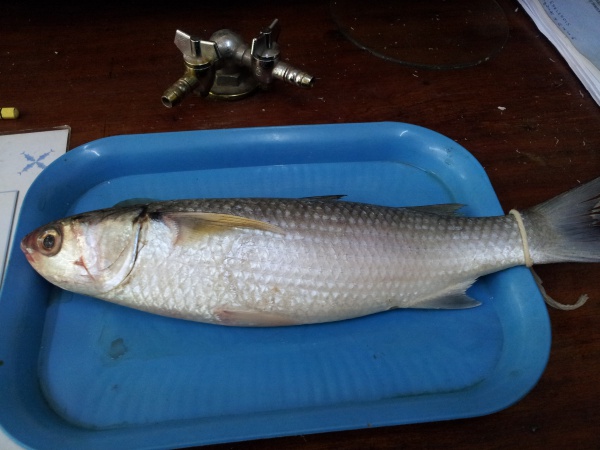Facts About Flathead grey mullet
The flathead grey mullet, a member of the Mugilidae family, is a widely favored food fish found in tropical and subtropical coastal waters worldwide. This species, typically measuring between 30 to 75 centimeters in length, is known by various names, including flathead mullet, striped mullet, black mullet, and sea mullet.
Flathead grey mullets are diurnal, meaning they are active during daylight hours. These fish are commonly seen in estuaries and rivers, usually schooling over sandy or muddy substrates where they feed on zooplankton. They are euryhaline, capable of adapting to varying salinity levels, adding to their ecological versatility.
In terms of appearance, these mullets feature an olive-green back with silvery sides that transition to a white belly. They also possess distinct lateral stripes. Juvenile mullets primarily consume zooplankton, while adults predominantly feed on algae in freshwater environments. These cosmopolitan fish thrive in coastal waters ranging from tropical to temperate regions, including diverse locales from the Bay of Biscay to Nova Scotia. In Australia, their distribution spans from Far North Queensland to the Kimberley Region in Western Australia, inhabiting various marine and estuarine environments.
In the Western United States, the striped mullet historically migrated up rivers such as the Colorado River but are now predominantly found in coastal areas due to dam constructions. Both fisheries and aquaculture heavily target this species, with reported catches of approximately 130,000 tonnes from fishing and 142,000 tonnes from aquaculture in 2012. Mullet roe is particularly esteemed internationally and is used to produce specialty foods like bottarga in Italy and fesikh in Egypt.
Culinarily, mullet is especially popular in regions like Northwest Florida and Alabama. It can be prepared in multiple ways—fried, smoked, baked, or canned. In Florida, the white mullet is preferred for its milder flavor. Additionally, the fish frames are often utilized to make fish stock for stews and chowders.

 Guyana
Guyana